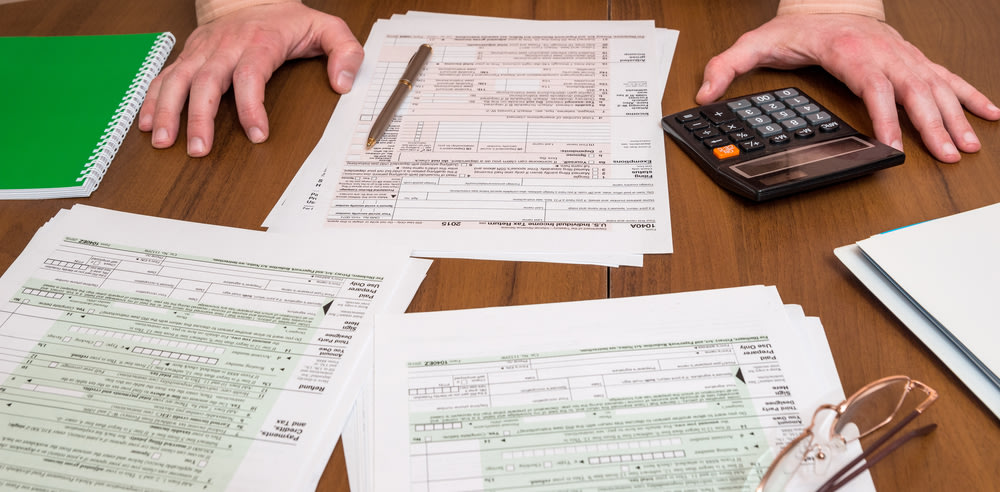
IRS Forms W-9 vs 1099: What’s the Difference?
Both W-9 and 1099 are types of information returns that the IRS requires when a contractor performs paid work for a business. The difference between 1099 vs W-9 is a straightforward one: the contractor fills out the W-9 form to provide information to the business they work for, and that business later reports the contractor’s yearly earnings on the 1099 form. If you are a small business owner who uses contractors, you can use this guide to quickly learn about using these two tax forms.
The Difference between a Contractor and an Employee
To understand the purpose of W-9 and 1099, you will first need to know how to distinguish a contractor from an employee. From the IRS’s perspective, both “employee” and “contractor” are worker classifications. The distinction can be a subtle one at times because a contractor can sometimes perform the same type of work as an employee.
The key differentiator is that contractors—i.e., self-employed people who might alternatively refer to themselves as independent contractors, freelancers, or sole proprietors—are engaged to provide a fixed deliverable to you, but they have control over when and how they do the work. An employee, on the other hand, has a more fixed relationship with an employer, likely working defined hours, and is entitled to benefits such as medical insurance or 401(k) plans.
Businesses are required to take care of tax withholding for employees and pay Social Security and Medicare taxes on their wages. Contractors have the responsibility of paying their own state and federal income tax and consequently may make business deductions, such as the costs of keeping a home office.
The IRS’s subcontractor tax form requirements are the same as for contractors. The entity that pays the subcontractor will be the one that deals with their tax forms.
Important Terms for Business IRS Forms
Businesses need to follow tax law to the letter, and it all begins with identifying taxable entities properly. The IRS refers to taxable entities, whether individuals or businesses, using their taxpayer identification number (TIN).
There are two types of TINs that can apply to individual contract workers. If your contractor has a business they have registered with the IRS, they will have been given an employer identification number (EIN)—even though that business is a sole proprietorship with no other employees. If a contractor has not registered a business and is simply working as a self-employed individual, they will use their social security number for tax reporting. TIN, EIN, and SSN are all terms you will see on the W-9 and 1099 forms.
What Is a W-9 Form?
The W-9 tax form is a single-page document entitled “Request for Taxpayer Information and Certification.” The W-9 requirements are basic, disclosing a contractor’s identifying tax information. This includes the legal name, address, and social security number of individuals who don’t have a registered business entity. Individuals with a registered business must also provide the business name and EIN.
If the contractor has an EIN, they do not need to also supply their social security number. One ID number is all that is required to ensure the IRS has the right information.
Form W-9 ends with a signed declaration by the contractor that they have inputted the information truthfully and that they are authorized to work in the U.S.
Who Is Required to Fill Out a W-9 IRS Form?
Any non-employee individual who is likely to do more than $600 worth of work for you before year’s end should fill out a W-9 form. If a contractor fails to submit a W-9 to you, you are required by law to withhold 28% of their earnings for taxes. W-9 is only for individuals; other businesses working for you do not need to submit this form.
What Is a 1099 Form?
Form 1099-MISC is a single-page document entitled “Miscellaneous Income.” There are other 1099 forms issued by the IRS for “additional income” types, but 1099-MISC is the one used for contractors. The boxes that you do not need to fill in on the form will be obvious to you—such as “rents,” “royalties,” “golden parachute payments,” “crop insurance proceeds,” or even “fishing boat proceeds.”
The key information on the form consists of TINs for both the paying entity and the payee, and the total amount paid for the year.
When to Issue a 1099
One simple rule governs when to use a 1099: Prepare one for every contractor who has earned more than $600 from your business in the course of a single tax year. Fill it out as soon as possible after December 31 because the deadline for providing it to your contractor is January 31. This is the same deadline the IRS uses for employers required to send W-2 forms to employees.
How to Use W-9 and 1099 Forms Together
The best practice for businesses is to ask contractors to fill out a W-9 form on the day you hire them. Although you will not need to submit the W-9 to the IRS, you will need that information later to fill out the contractor’s 1099. Keep it on file so you can resurrect it at year’s end.
Be sure to issue those 1099 forms to your contractors as soon as you can in January, and by January 31 at the latest. Your contractors are depending on you to get their IRS forms to them in time to meet their tax reporting obligations.
A Quick Hack for Contractors
If you are a contractor and businesses engage you for new work often, you can keep an unsigned, scanned W-9 on your computer or in the cloud. Then all you need to do is print, sign, and scan one each time you need it.
Looking for more small business tips? Check out these articles from the SumUp blog:
Small Business Grants: 25+ Places to Find Free Money in 2019
